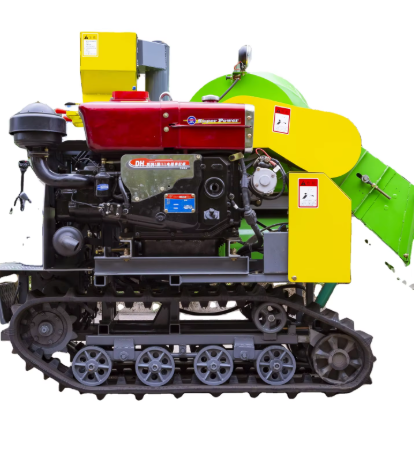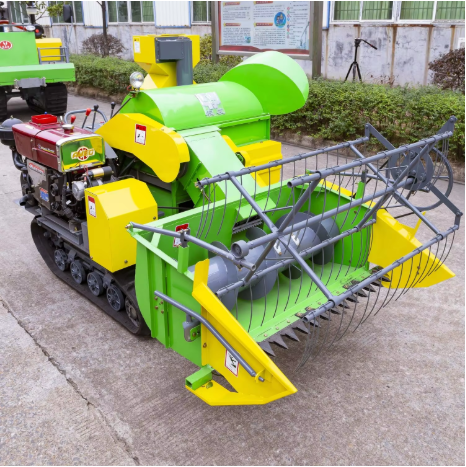Understanding Modern Grain Drying Technology
Selecting the right grain dryer for your agricultural operation is a critical decision that impacts your harvest's quality, storage life, and ultimately, your bottom line. Today's grain dryer technology has evolved significantly, offering farmers more efficient and precise options for maintaining optimal moisture levels across different crop varieties. Whether you're handling corn, wheat, soybeans, or specialty grains, the drying process plays a vital role in preserving grain quality and maximizing market value.
Key Considerations for Grain Dryer Selection
Capacity and Throughout Requirements
When evaluating a grain dryer, one of the first factors to consider is its capacity relative to your harvesting operation. The ideal grain dryer should be able to keep pace with your combine's harvesting rate while maintaining consistent drying quality. For smaller operations, a smaller capacity dryer might suffice, but larger farms need to consider industrial-scale grain dryers that can handle substantial volumes efficiently.
Consider your peak harvest periods and calculate the maximum daily throughput you'll need. A good rule of thumb is to select a grain dryer with capacity that exceeds your average daily harvest by 20-25% to account for varying moisture conditions and potential equipment downtime.
Energy Efficiency and Fuel Options
Modern grain dryers come with various energy sources, including propane, natural gas, and electric options. The choice of fuel type can significantly impact your operating costs and drying efficiency. Latest grain dryer models incorporate heat recovery systems and advanced temperature controls that can reduce energy consumption by up to 30% compared to older models.
Consider the availability and cost of different fuel sources in your area. While propane might be readily available in rural locations, natural gas could be more cost-effective if you have access to pipeline infrastructure. Some newer grain dryer models also offer hybrid systems that can switch between fuel sources based on availability and cost.
Matching Dryer Types to Specific Crops
Continuous Flow Systems
Continuous flow grain dryers are ideal for operations handling large volumes of similar grain types. These systems allow for constant loading and unloading, making them particularly effective for corn and wheat operations. The continuous movement of grain through the drying chamber ensures even moisture removal and reduces the risk of over-drying.
Modern continuous flow systems often feature advanced moisture sensing technology that automatically adjusts drying parameters based on incoming grain moisture levels. This precision helps maintain consistent quality while optimizing energy usage.
Batch Drying Solutions
Batch dryers are well-suited for farms that handle multiple grain types or smaller volumes. These systems offer greater flexibility in adjusting drying parameters for different crops. Batch drying is particularly beneficial for specialty grains that require careful moisture management to maintain quality and market value.
The latest batch dryer models incorporate automated controls that can store specific drying profiles for different grain types, making it easier to switch between crops while maintaining optimal drying conditions.

Advanced Features and Technology Integration
Moisture Control Systems
The precision of moisture control can make or break your grain quality. Modern grain dryer systems feature advanced moisture sensing and control mechanisms that continuously monitor and adjust drying parameters. These systems help prevent over-drying while ensuring consistent moisture levels throughout the batch.
Look for grain dryers with multiple moisture sensing points and automated control systems that can respond quickly to variations in grain moisture content. Some advanced models even offer remote monitoring capabilities through smartphone apps.
Temperature Management Features
Different crops require different drying temperatures to maintain quality and prevent damage. High-quality grain dryers offer precise temperature control systems that can be adjusted based on crop type and conditions. This is particularly important for temperature-sensitive crops like soybeans or specialty grains.
Advanced temperature management features often include multiple temperature zones and gradual cooling systems that help prevent thermal stress on the grain. These features contribute to better end product quality and reduced energy consumption.
Maintenance and Long-term Considerations
Service Requirements
Regular maintenance is crucial for keeping your grain dryer operating efficiently throughout the harvest season. Consider the accessibility of service technicians and parts availability when selecting a grain dryer. Many modern systems include self-diagnostic capabilities that can alert operators to potential issues before they cause significant downtime.
Look for manufacturers that offer comprehensive service packages and have a strong dealer network in your region. This support becomes particularly important during peak harvest periods when any downtime can be costly.
Future Scalability
When investing in a grain dryer, consider your operation's future growth plans. Some systems offer modular designs that allow for capacity expansion without requiring a complete system replacement. This flexibility can be valuable as your operation grows or crop mix changes over time.
Consider also the potential for future technology upgrades. Many modern grain dryers are designed to accommodate software updates and new control systems, helping to future-proof your investment.
Frequently Asked Questions
What factors most influence grain dryer efficiency?
Grain dryer efficiency is primarily influenced by proper sizing, regular maintenance, optimal airflow management, and accurate moisture sensing systems. Environmental conditions, grain cleanliness, and operating temperatures also play significant roles in overall drying efficiency.
How does grain type affect dryer selection?
Different grains have varying moisture requirements, temperature sensitivities, and flow characteristics. For example, corn can typically withstand higher drying temperatures than soybeans, while specialty grains might require more precise moisture control. Your grain dryer should be capable of handling these specific requirements for your crop mix.
When is the best time to upgrade a grain dryer?
Consider upgrading your grain dryer when operating costs increase significantly, maintenance becomes more frequent, or when your operation's capacity needs change. The off-season is typically the best time to plan and implement an upgrade, allowing for proper installation and testing before the harvest season begins.

